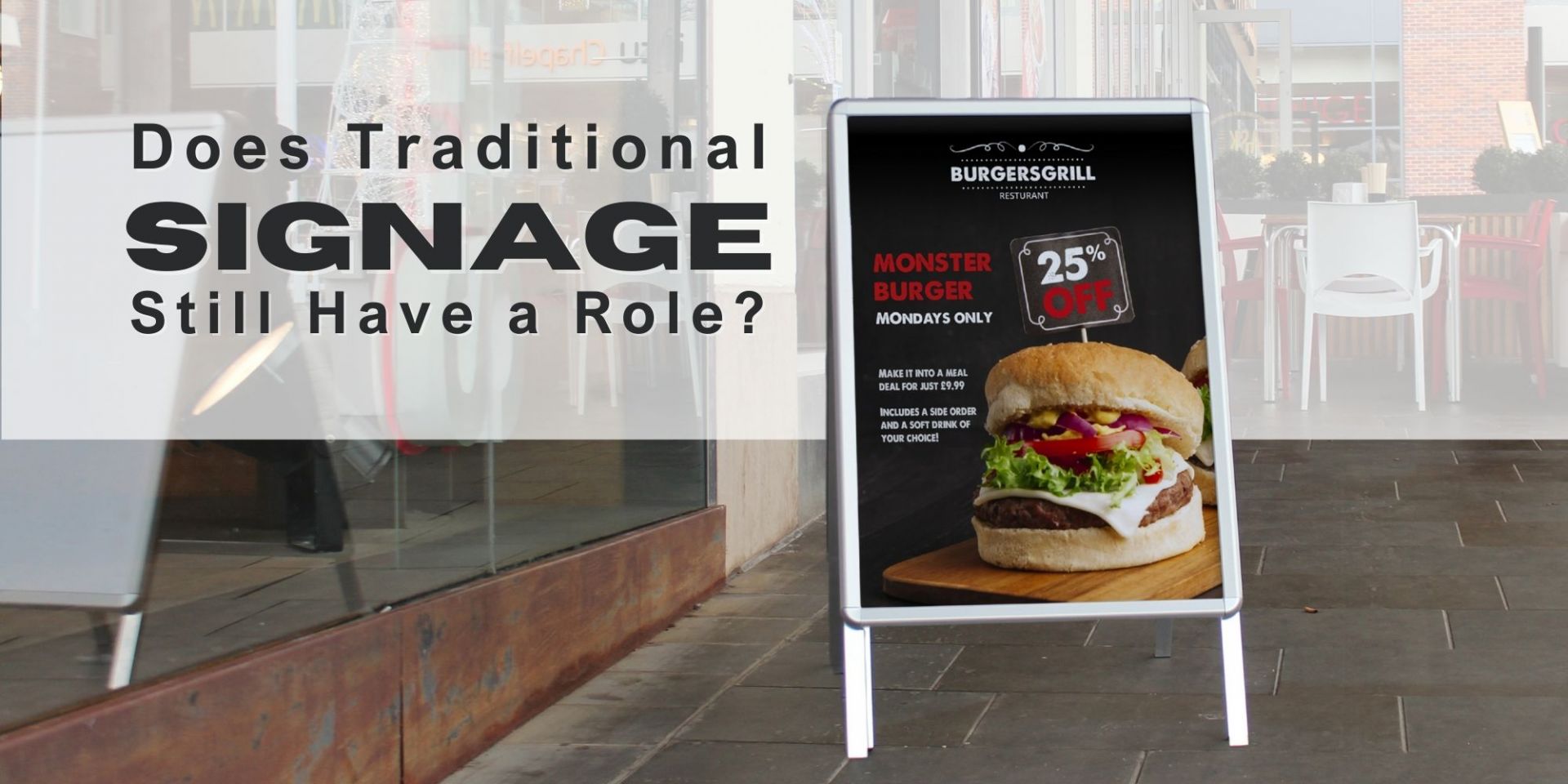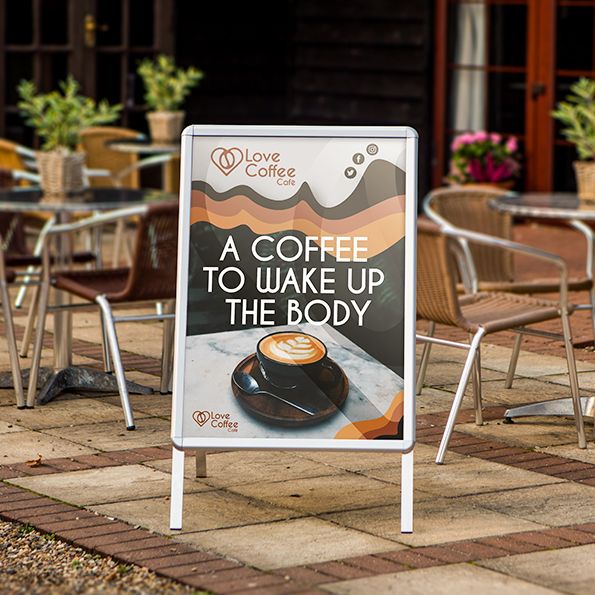
The Power of Traditional Signage
Traditional signage serves as a silent yet powerful brand ambassador. It conveys key information, attracts potential customers, and reinforces brand identity. According to a survey conducted by FedEx Office, signage significantly influences consumer behaviour:- 76% of consumers enter a store they have never visited before based purely on its signage.
- 68% have made a purchase because a sign caught their attention.
- 68% believe signage reflects the quality of a store’s products or services.
- 52% of consumers are deterred by poorly made or misspelt signage, and **60%** are discouraged from entering a store without a sign altogether.
Enhancing Brand Visibility and Positioning
A well-placed Flange Sign or A-Master Board acts as a beacon for potential customers. Unlike digital advertisements, which require repeated investment, signage is a one-time expense that provides ongoing exposure, operating 24/7 to enhance brand recognition.Beyond attracting customers, signage helps define a brand’s positioning. A well-designed and professional-looking sign suggests quality and credibility, reinforcing a positive reputation. Conversely, cheap or poorly maintained signage can deter customers and diminish trust in the brand.

A-Master Plus
The Role of Tactical and Wayfinding Signage
Signage is more than just an external marketing tool. It plays a crucial role in customer experience inside a store. Tactical signage, such as regularly updated marketing messages, demonstrates a commitment to customer service. Promotions and new product announcements displayed on eye-catching signs can significantly influence purchasing decisions, particularly for impulse buys.Wayfinding signage is another crucial element, ensuring customers can easily navigate a store. Well-placed signs reduce frustration, enhance the shopping experience, and improve overall satisfaction. This is particularly important for large retail spaces, shopping centres, and businesses with complex layouts.
Traditional Signage in the Digital Age
Despite rapid advancements in digital marketing, traditional signage remains relevant. In an era where digital media can sometimes feel overwhelming or intrusive, physical signage offers a familiar and trusted form of communication. Unlike online ads that can be skipped or ignored, a well-positioned sign is always visible, continuously reinforcing brand presence.For bricks-and-mortar businesses, signage is just as crucial as a website. It acts as a tangible representation of the brand, ensuring customers can find and engage with a business easily. When combined with digital marketing efforts, signage creates a seamless customer experience, bridging the gap between online and offline interactions.
Traditional signage is far from obsolete. Its ability to attract customers, enhance brand perception, and influence purchasing decisions makes it a vital marketing tool. While digital strategies continue to evolve, businesses should not overlook the timeless effectiveness of signage. In a world of fleeting online ads and ever-changing algorithms, signage remains a steadfast, cost-effective, and powerful means of communication. For businesses looking to make a lasting impression, investing in high-quality traditional signage is as important today as it has ever been.